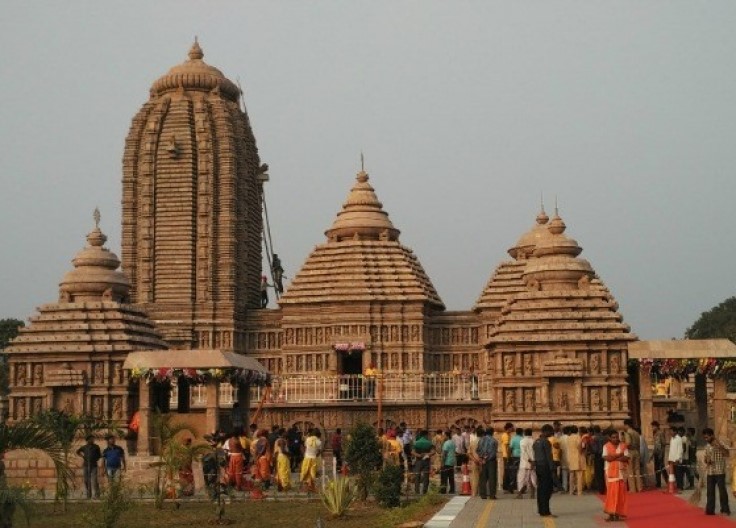CONTENTS
- Jagannath Rath Yatra
- Asia Pacific Plant Protection Commission
Jagannath Rath Yatra
Focus: GS I- Festivals
Why in News?
The Jagannath Rath Yatra officially begins in Puri, Odisha. This year, the festival commenced on June 20, 2023 and will culminate on June 28, 2023.
About Jagannath Rath Yatra
- Ratha Jatra, the Festival of Chariots of Lord Jagannatha is celebrated every year at Puri, the temple town in Orissa, on the east coast of India.
- It involves a public procession with a chariot with deities Jagannath (Vishnu avatar), BalaBhadra (his brother), Subhadra (his sister) and Sudarshana Chakra (his weapon) on a ratha, a wooden deula-shaped chariot.
- The huge, colourfully decorated chariots, are drawn by hundreds and thousands of devotees on the bada danda, the grand avenue to the Gundicha temple, some two miles away to the North.
- It attracts over a million Hindu pilgrims who join the procession each year.
About Shree Jagannath temple

- The Shree Jagannath Temple of Puri is an important Hindu temple dedicated to Lord Jagannath, a form of Vishnu, in Puri in the state of Odisha on the eastern coast of India.
- The present temple was rebuilt from the 10th century onwards, on the site of an earlier temple, and begun by King Anantavarman Chodaganga Deva, first of the Eastern Ganga dynasty.
- The Puri temple is famous for its Annual Ratha yatra, or chariot festival, in which the three principal deities are pulled on huge and elaborately decorated temple cars. These gave their name to the English term Juggernaut.
- Unlike the stone and metal icons found in most Hindu temples, the image of Jagannath is made of wood and is ceremoniously replaced every twelve or nineteen years by an exact replica.
Architecture of Jagannath temple

- The Temple of Jagannath at Puri is one of the major Hindu temples in India.
- The temple is built in the Kalinga style of architecture, with the Pancharatha (Five chariots) type consisting of two anurathas, two konakas and one ratha. Jagannath temple is a pancharatha with well-developed pagas. ‘Gajasimhas’ (elephant lions) carved in recesses of the pagas, the ‘Jhampasimhas’ (Jumping lions) are also placed properly.
- The perfect pancharatha temple developed into a Nagara-rekha temple.
- The temple is built on an elevated platform, as compared to Lingaraja temple and other temples belonging to this type.
- This is the first temple in the history of Kalingaan temple architecture where all the chambers like Jagamohana, Bhogamandapa and Natyamandapa were built along with the main temple.
- There are miniature shrines on the three outer sides of the main temple.
Asia Pacific Plant Protection Commission
Focus: International Relations
Why in News?
The Asia Pacific Plant Protection Commission unanimously elected India as chair of the Standing Committee on Integrated Pest Management (IPM) for the biennium 2023-24 during the 32nd Session held in Bangkok.
Asia Pacific Plant Protection Commission: Overview and Objectives
Background:
- The Asia Pacific Plant Protection Commission is an intergovernmental organization established in 1956 under the approval of the Food and Agriculture Organization (FAO) of the United Nations.
- Its purpose is to foster collaboration among countries in the Asia-Pacific region to enhance plant health and protection.
Membership:
- The commission comprises 25 member countries, including India, with each country represented by its delegates.
Organizational Structure:
- The commission’s structure involves the participation of representatives from all member countries. A Chairperson, elected from among the members, serves for a two-year term.
- The Director-General of the FAO appoints and supports the secretariat responsible for coordinating, organizing, and overseeing the commission’s work.
Meetings:
- The commission convenes at least once every two years, providing an opportunity for all member countries to participate.
Objectives:
- The primary objectives of the commission include coordinating and supporting plant protection activities among its member countries in the Asia-Pacific region.
- It focuses on developing regional standards for phytosanitary measures (RSPMs) and other relevant initiatives to safeguard plant health and promote sustainable agricultural practices





